Tarantula Wasp vs Tarantula Facts
The tarantula wasp and the tarantula represent a dramatic clash in the insect world, a classic example of predator versus prey. This battle unfolds in the arid and semi-arid regions of the Americas, where these two formidable creatures share a habitat. The tarantula wasp, a large and imposing insect, is a specialist predator, specifically targeting tarantulas. The interaction between these two species is not merely a matter of survival; it is a complex interplay of instinct, adaptation, and the relentless drive to perpetuate their respective species. This article will delve into this fascinating dynamic, providing a comprehensive overview of the tarantula wasp’s strategies, the tarantula’s defenses, and the ultimate outcome of this epic struggle. We will explore the key facts that define this relationship and shed light on the natural history of these remarkable creatures.
The Tarantula Wasp: A Deadly Predator
The tarantula wasp, belonging to the Pompilidae family, is renowned for its impressive size, often reaching up to two inches in length. These wasps are easily identified by their striking appearance, typically featuring a vibrant combination of black and blue coloration, which serves as a warning to potential predators. They possess a potent sting, which they use not for defense, but to paralyze their prey. The tarantula wasp’s life cycle is intricately linked to the tarantula, as they require a live tarantula to serve as a host for their larvae. This specialized hunting behavior is a testament to the wasp’s remarkable adaptation and predatory prowess, making it one of the most feared insects in its environment. The tarantula wasp’s venom is designed to specifically target the tarantula’s nervous system, ensuring that the spider remains alive but immobile, allowing the wasp to complete its reproductive cycle.
Appearance and Characteristics of the Tarantula Wasp
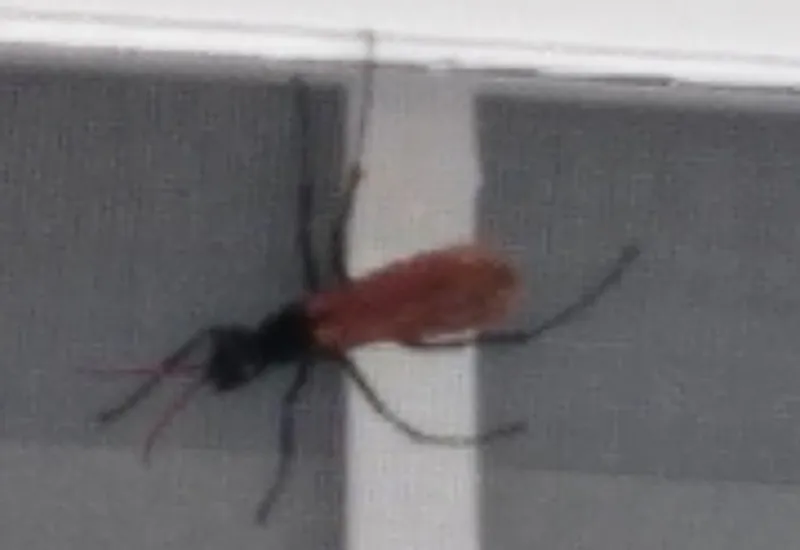
Tarantula wasps are generally large, robust insects, with females being notably larger than males. Their bodies are typically a deep blue or black, often with iridescent highlights. The wings are usually a smoky hue, and the legs are long and spiny, adapted for digging and manipulating their prey. A key characteristic is their formidable sting, which is among the most painful stings in the insect world. This is not just for defense; the venom contains a neurotoxin designed to paralyze the tarantula. They have powerful mandibles, used for carrying the paralyzed tarantula and preparing the nest. These wasps are solitary creatures, with the females taking on the responsibility of hunting, nesting, and laying eggs. Their physical attributes are perfectly adapted for their predatory lifestyle, making them a fearsome opponent in their ecosystem.
The Tarantula: A Giant Spider
Tarantulas are among the largest spiders in the world, with some species having a leg span exceeding ten inches. They are characterized by their hairy bodies, large fangs, and formidable hunting skills. They are primarily nocturnal hunters, using their sensitive hairs to detect vibrations in the ground. Tarantulas typically live in burrows or under rocks, ambushing their prey, which includes insects, small vertebrates, and occasionally, other spiders. Their life cycle involves multiple molts, as they grow larger, shedding their exoskeleton. Tarantulas can live for many years, with females often living much longer than males. They play a crucial role in their ecosystems, controlling insect populations and serving as prey for larger animals. Their imposing size and predatory nature make them a dominant presence in their habitats, until they encounter the tarantula wasp.
Appearance and Characteristics of the Tarantula
Tarantulas are instantly recognizable by their large size and distinctive appearance. Their bodies are covered in dense hairs, which serve sensory functions, allowing them to detect movement and vibrations. The coloration varies greatly depending on the species, ranging from brown and black to vibrant hues. They have eight eyes, providing them with a wide field of vision, although their eyesight is not particularly sharp. Two large fangs are used to inject venom into their prey. Tarantulas possess a powerful bite and can inject venom, primarily used to subdue their prey. Their long legs and strong bodies enable them to move quickly, both to hunt and to escape threats. They are well-adapted to their environments, with physical characteristics suited for both ambush and defense, yet they are no match for the tarantula wasp.
The Epic Battle Begins: Hunting Strategies
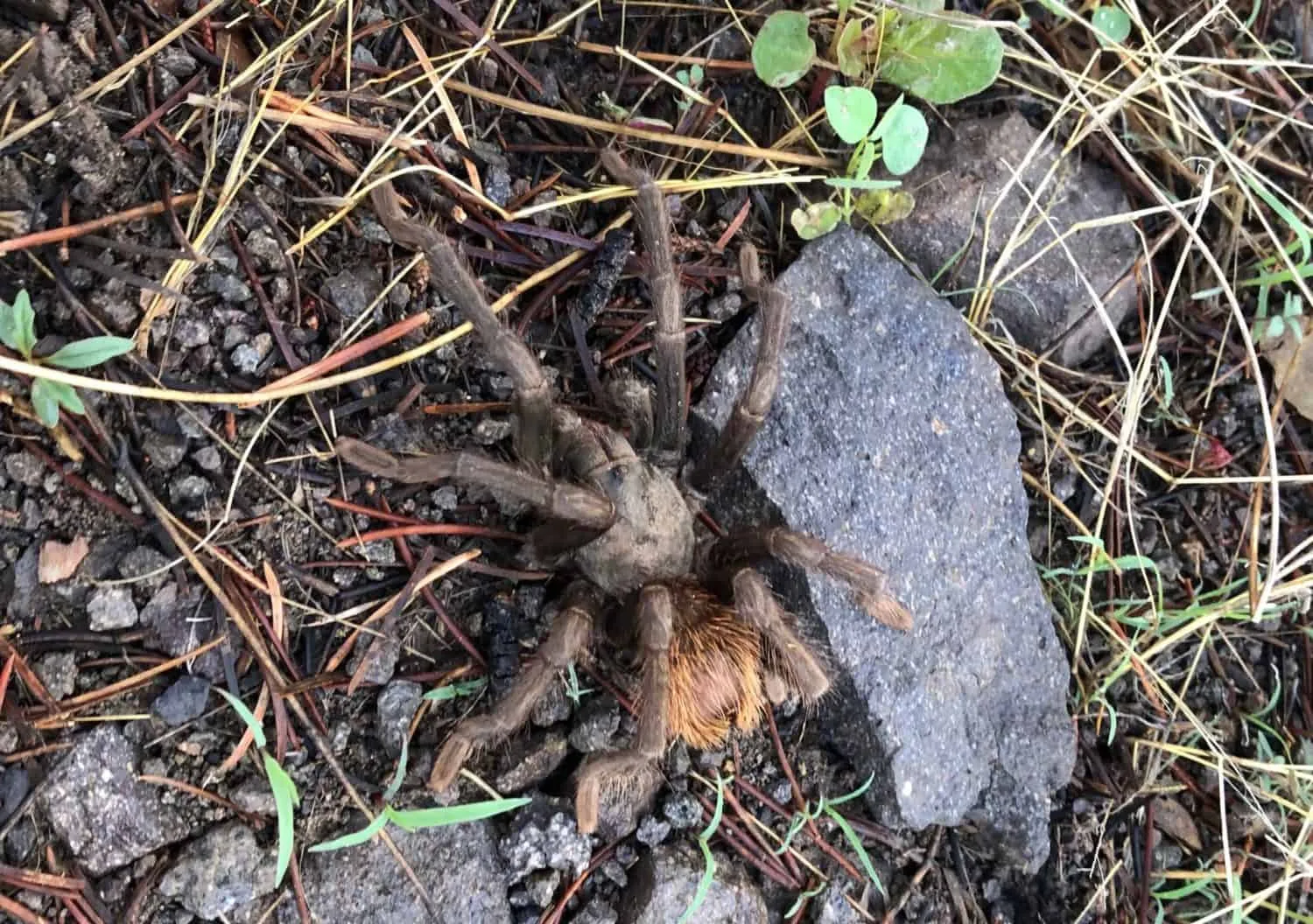
The tarantula wasp’s hunting strategy is a display of precision and courage. It begins with the wasp locating a tarantula, often by searching its burrow or stalking it in its natural habitat. The wasp then carefully approaches the spider, avoiding the tarantula’s defensive strikes. The tarantula, despite its size and venomous bite, is often at a disadvantage due to the wasp’s agility and focused attack. The wasp’s strategy is not about killing the tarantula, but paralyzing it. This is crucial for the wasp’s reproductive cycle, as the paralyzed tarantula will serve as a living incubator for the wasp’s larva. The hunting phase is a high-stakes battle of wits and strength, where the wasp must use its skills to overcome the spider’s defenses. The effectiveness of the wasp’s hunting strategy highlights the predator-prey dynamic and the remarkable adaptations of both species.
How the Tarantula Wasp Hunts the Tarantula
The tarantula wasp’s hunt is a carefully orchestrated sequence of maneuvers. The wasp usually starts by locating a tarantula, often near its burrow entrance or in open areas. Once it has identified its target, the wasp approaches with extreme caution, avoiding the tarantula’s fangs and defensive postures. The wasp’s agility and speed are key to its success. It may use a combination of aerial attacks and ground maneuvers to position itself for a sting. The wasp’s primary aim is to sting the tarantula in a specific nerve ganglion, thereby paralyzing it. The hunt often involves a dance of evasion and counterattacks, with the wasp waiting for the opportune moment to strike, demonstrating the complex interplay of predator-prey behavior in the natural world.
The Stinging Attack
The stinging attack is the most critical moment in the tarantula wasp’s hunt. The wasp must position itself strategically to deliver the sting, often targeting the tarantula’s abdomen or legs. This requires incredible precision and timing, as the tarantula will attempt to defend itself with its fangs and venom. The wasp’s sting is not meant to kill, but to paralyze. It injects a potent neurotoxin that quickly immobilizes the tarantula, rendering it helpless. The sting itself is extremely painful, and the tarantula will be in a state of paralysis, unable to move or defend itself. The wasp’s ability to deliver this precise sting is the cornerstone of its hunting success and the survival of its offspring.
Paralyzing the Tarantula
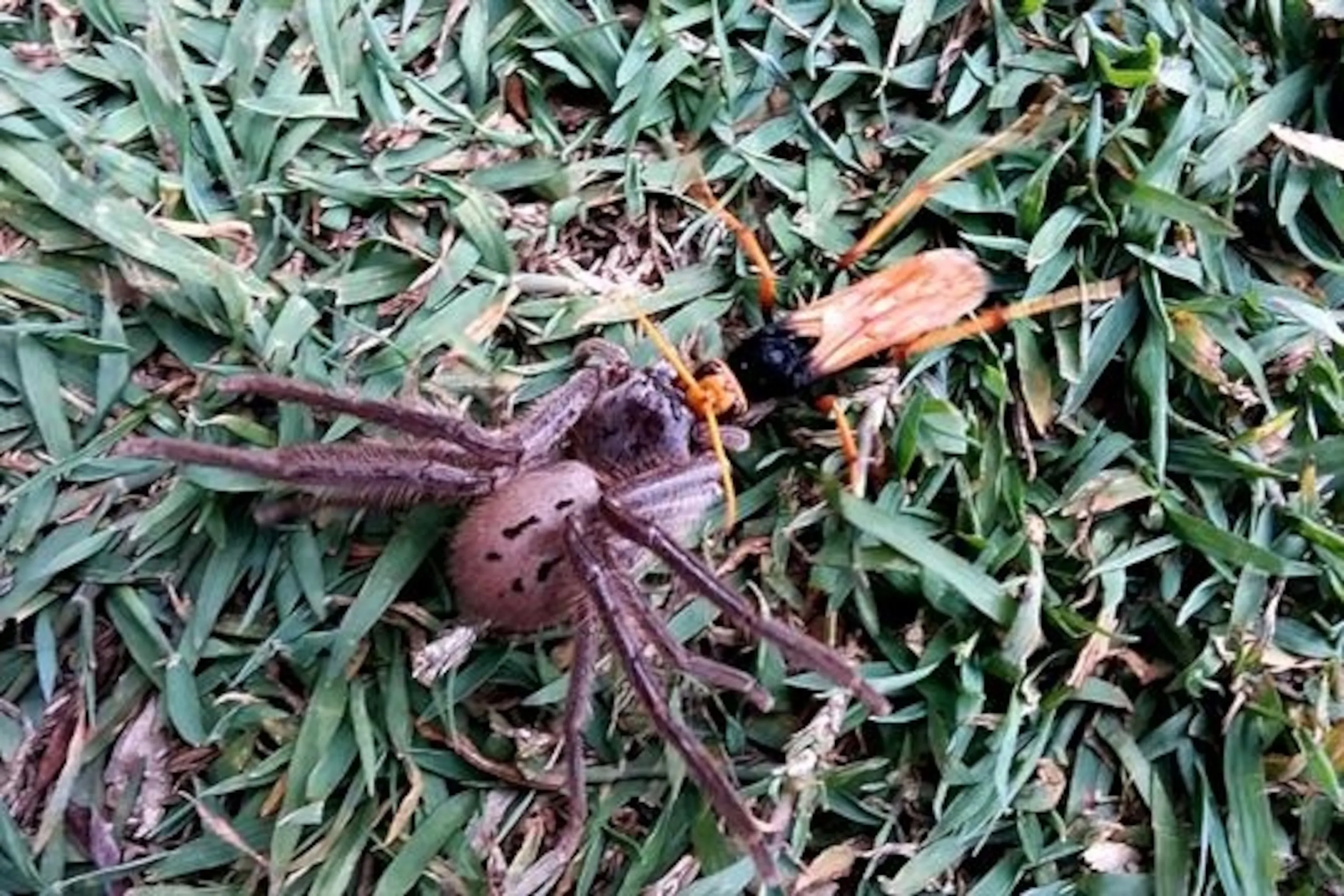
The paralysis is the pivotal result of the wasp’s sting. The injected venom works rapidly, causing the tarantula’s nervous system to shut down, rendering it unable to move. The spider remains alive but is completely immobile, essentially at the mercy of the wasp. This paralyzed state is crucial for the wasp’s life cycle. The tarantula, though paralyzed, is still a living host, providing a fresh food source for the wasp larva. The venom’s effect is temporary, designed to keep the tarantula alive until the wasp larva can fully develop and consume it. The paralysis is a perfect example of natural adaptation, which demonstrates the intricate balance of nature.
Nesting and Reproduction
After paralyzing the tarantula, the tarantula wasp begins the nesting process. The wasp often drags the paralyzed tarantula back to a pre-prepared burrow or creates a nest in a protected location. This effort can be incredibly challenging, as the wasp must move a spider that can be significantly larger and heavier than itself. Once the tarantula is in the nest, the wasp lays a single egg on the spider’s abdomen. This is the beginning of the wasp’s reproductive cycle. The egg will hatch, and the larva will begin to feed on the still-living but paralyzed tarantula. The nest serves as a safe environment for the larva, providing it with a constant supply of food and protection from the elements and other predators. The nesting process is a testament to the wasp’s instinct and dedication to ensuring the survival of its offspring.
The Wasp’s Nest
The wasp’s nest is a critical element in the reproductive process. The nest location varies, with some wasps utilizing existing burrows, while others dig their own, often in sandy or loose soil. The nest is usually a simple burrow or chamber, meticulously prepared to house the paralyzed tarantula and the wasp’s egg. The nest provides protection for the tarantula and the developing larva from environmental hazards and other predators. The preparation of the nest is a testament to the wasp’s innate instincts. The nest’s design and construction are optimized for the survival of the larva. The careful selection of a suitable location and the thorough preparation of the chamber underscore the critical role that the nest plays in the wasp’s reproductive success.
The Wasp’s Egg
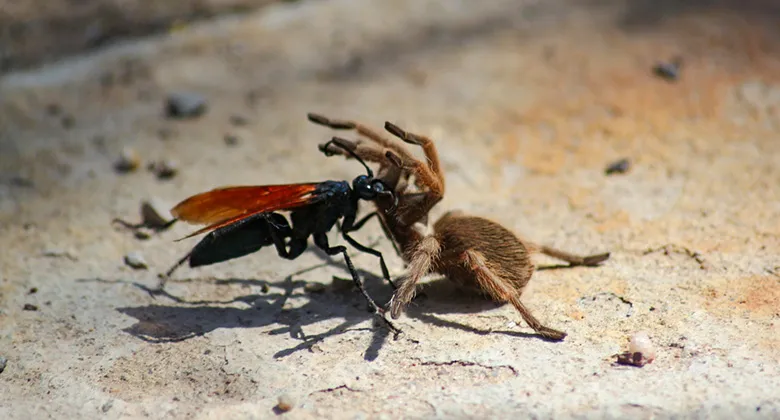
The tarantula wasp lays a single egg on the paralyzed tarantula. The egg is typically small and elongated, and it’s usually attached to the spider’s abdomen. This strategic placement ensures the larva has immediate access to food once it hatches. The egg is carefully positioned to maximize the larva’s chances of survival. The egg is the start of the wasp’s next generation, representing the future of the species. The egg’s survival depends on several factors, including protection from predators and the availability of a constant food source, which is the paralyzed tarantula. The wasp’s meticulous egg-laying process is a clear example of natural selection and adaptation in action.
The Larva and the Tarantula
Once the egg hatches, the wasp larva begins to feed on the paralyzed tarantula. The larva is a small, white, worm-like creature that feeds externally on the spider’s body. It consumes the tarantula alive, starting with the less vital organs to keep the host alive as long as possible. The larva grows rapidly, molting several times as it consumes the tarantula. The paralyzed state of the tarantula ensures that the larva has a continuous food supply without the spider being able to fight back. The larva’s development is a delicate balance, requiring a constant supply of nourishment and a safe environment. The larva’s growth and feeding habits demonstrate the intricate adaptations that support the wasp’s parasitic lifestyle.
The Aftermath and the Wasp’s Life Cycle
After the larva has completely consumed the tarantula, it pupates within the spider’s exoskeleton or the nest chamber. The pupa undergoes metamorphosis, transforming into an adult tarantula wasp. The duration of this pupal stage varies, depending on environmental conditions. Once the transformation is complete, the adult wasp emerges from the nest, ready to begin the cycle anew. The wasp’s life cycle demonstrates a perfect predator-prey relationship and the intricate dance of survival in the natural world. The transformation from egg to adult is a remarkable process, highlighting the resilience and adaptability of this fascinating insect. The cycle repeats with each generation, ensuring the continuation of this remarkable predator-prey relationship.
The Wasp Emerges
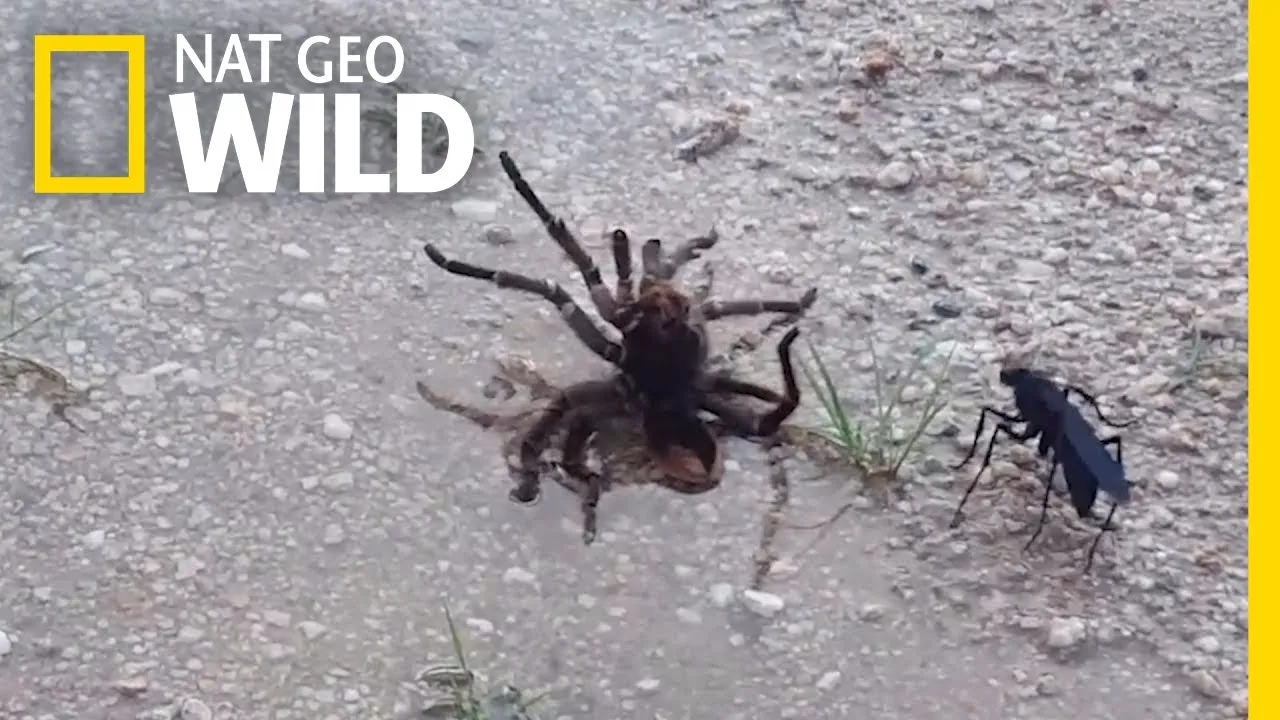
When the adult wasp is ready to emerge, it breaks through the remnants of the tarantula’s exoskeleton and the nest. The newly emerged wasp is fully formed and ready to reproduce, and the cycle repeats. The emergence marks the end of the cycle for the tarantula. The new wasp then embarks on its own journey to find a tarantula, and the cycle starts again. This emergence signals a new beginning and is a testament to the remarkable adaptation of the tarantula wasp. The wasp’s survival is a reminder of the power of natural selection and the delicate balance of nature.
The Importance of This Predator-Prey Relationship
The interaction between the tarantula wasp and the tarantula is a key component of the ecosystem. The tarantula wasp helps to control the tarantula population, preventing it from becoming overabundant. This balance is vital to maintaining the health and stability of the ecosystem. The predator-prey relationship is a classic example of natural selection and adaptation. It demonstrates how species evolve to survive in their environments. The tarantula wasp and tarantula highlight the delicate balance of nature and the importance of understanding the interdependencies that support biodiversity. This relationship shows the intricate web of life and the importance of each species’ role in maintaining ecological harmony.
